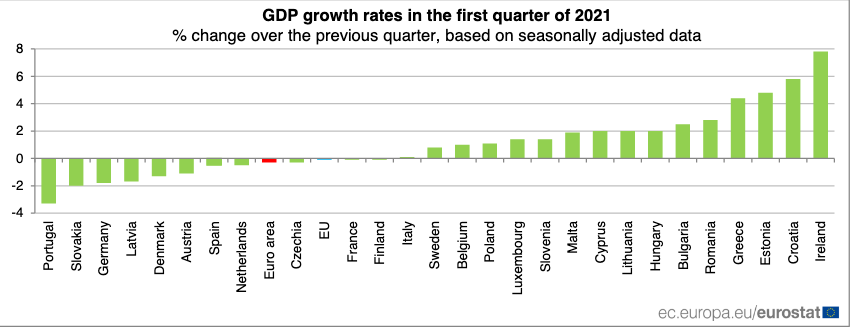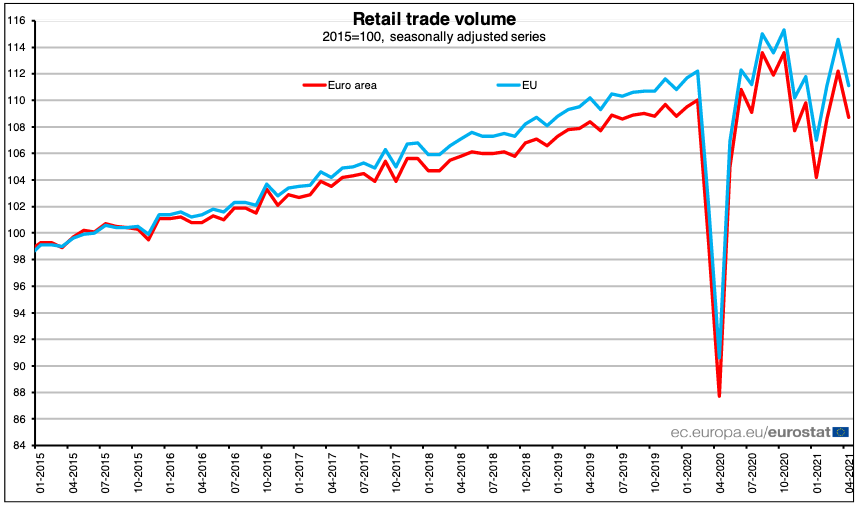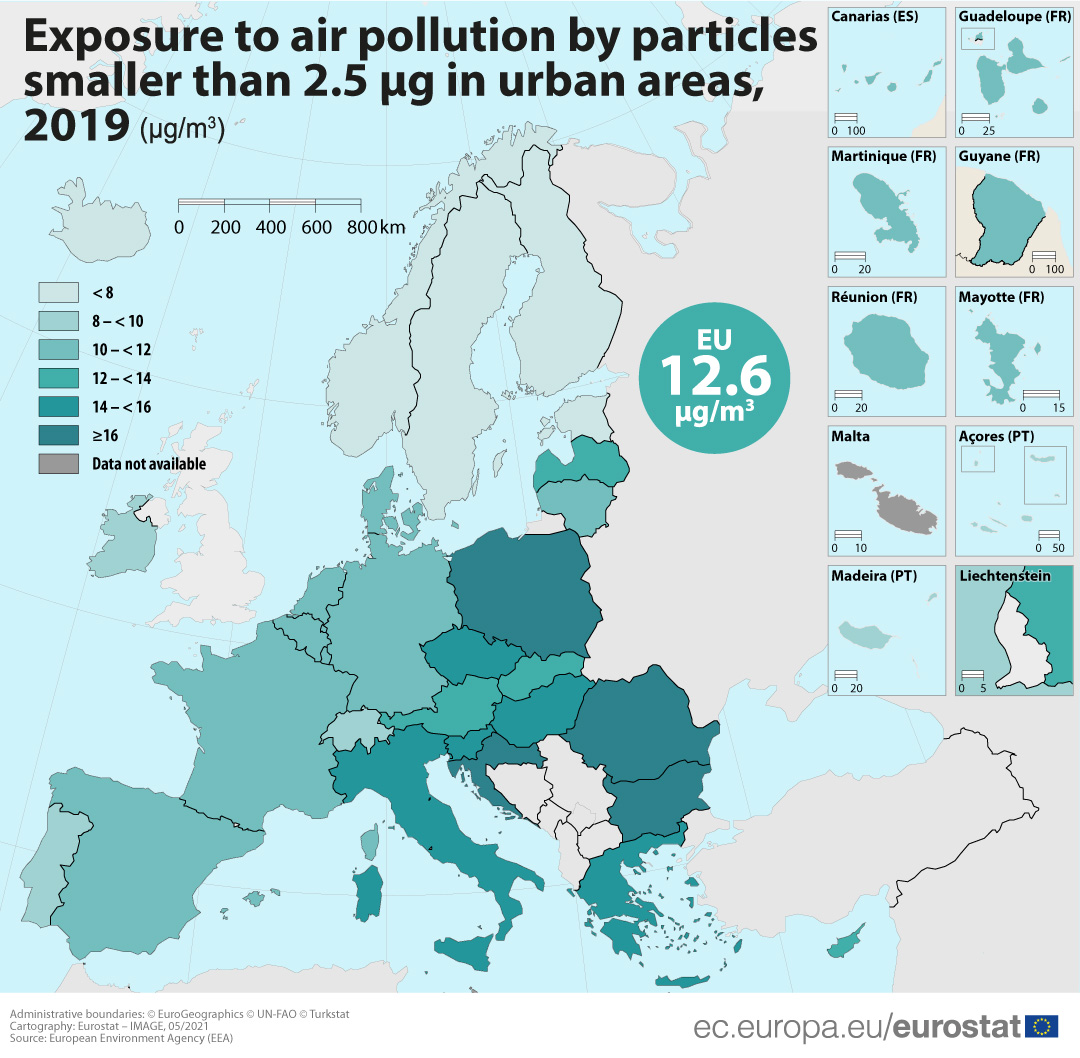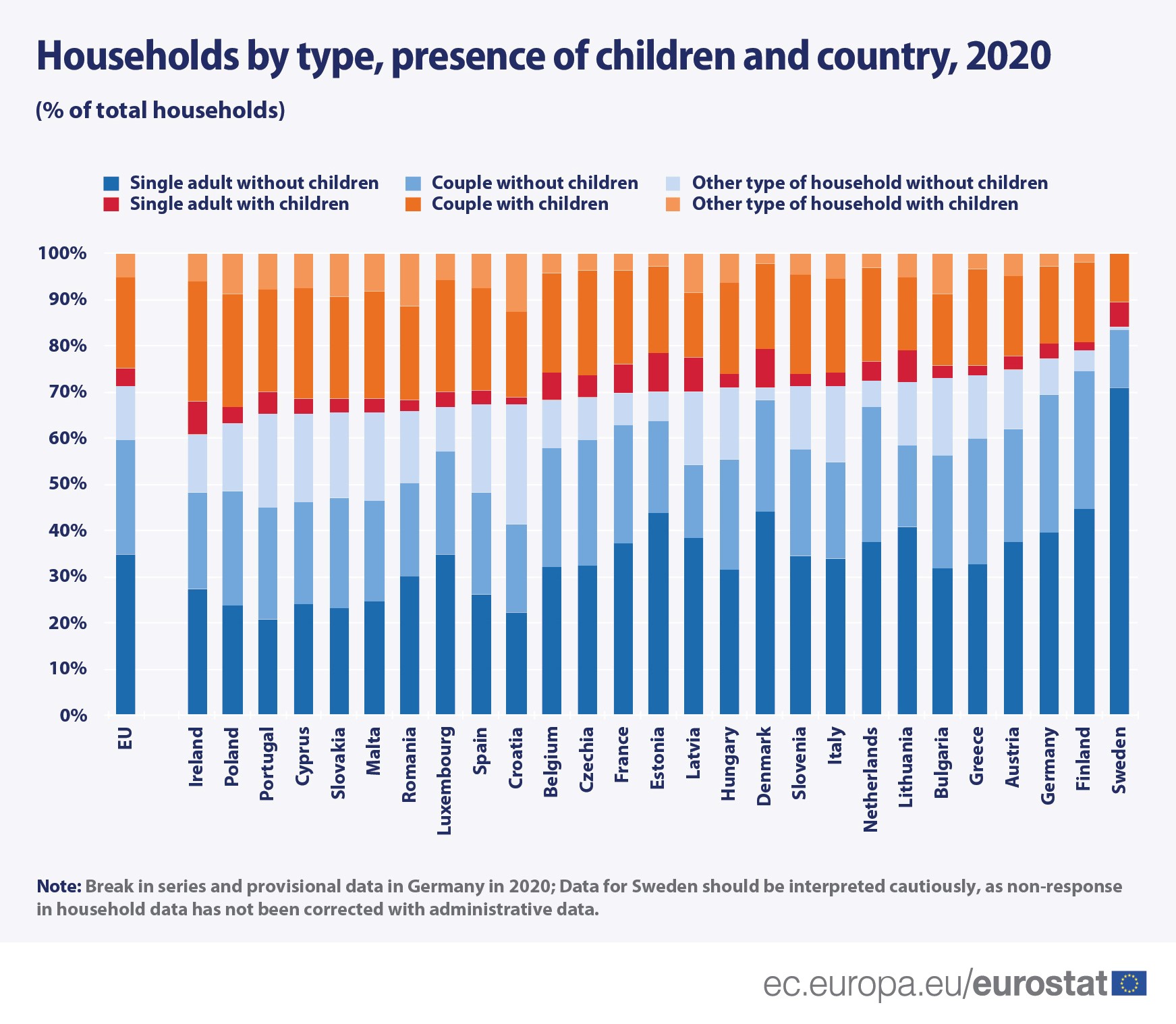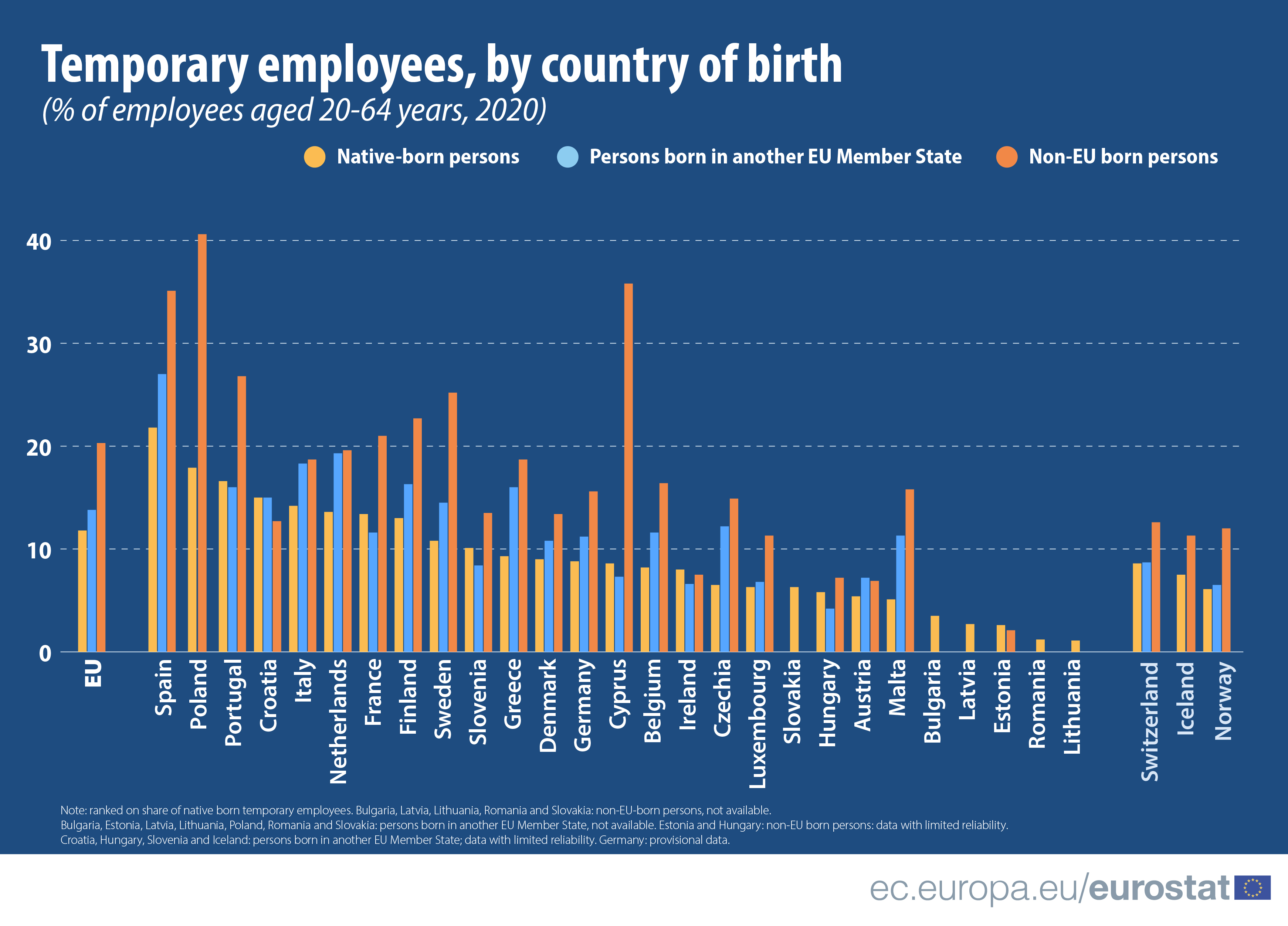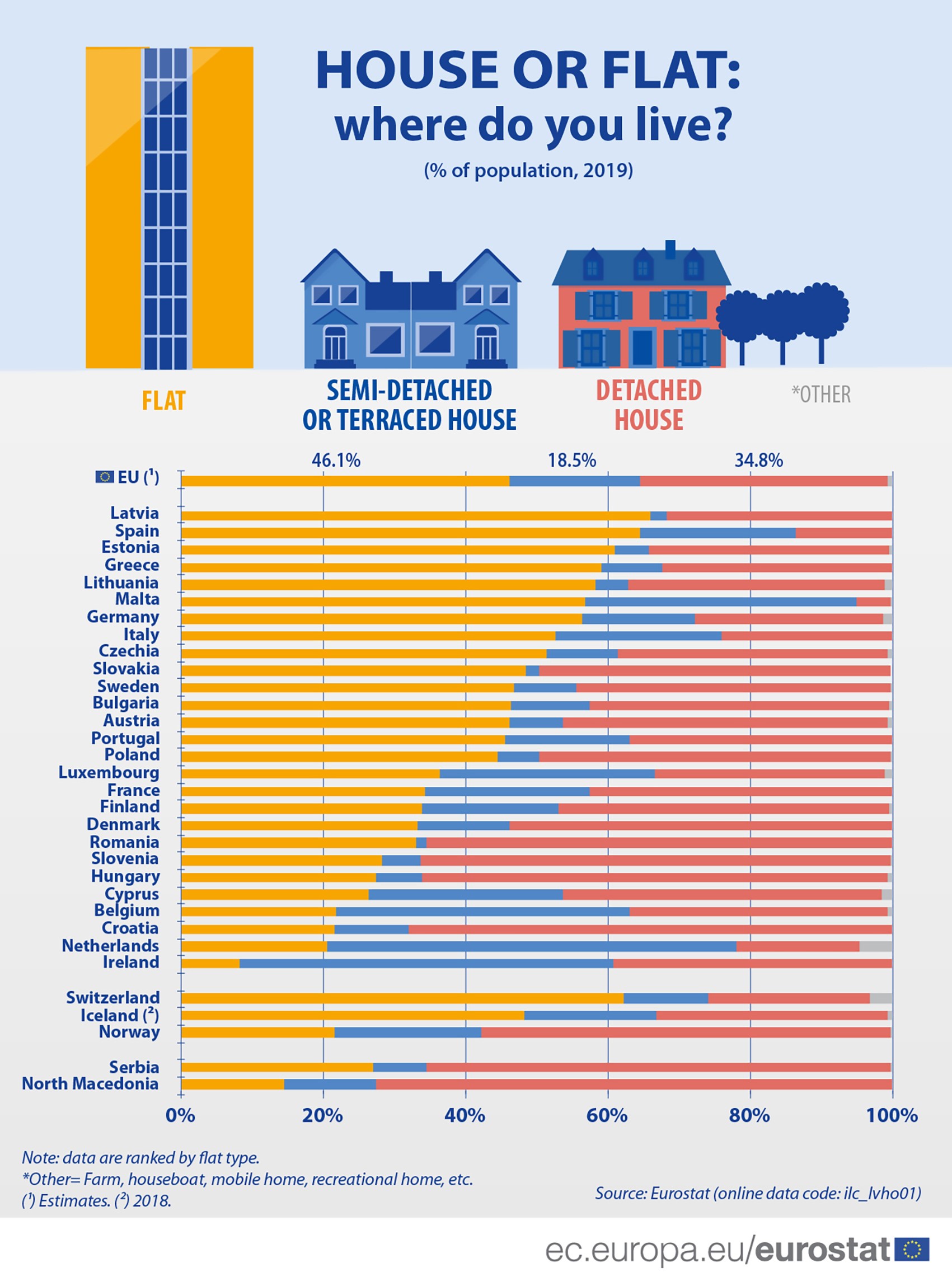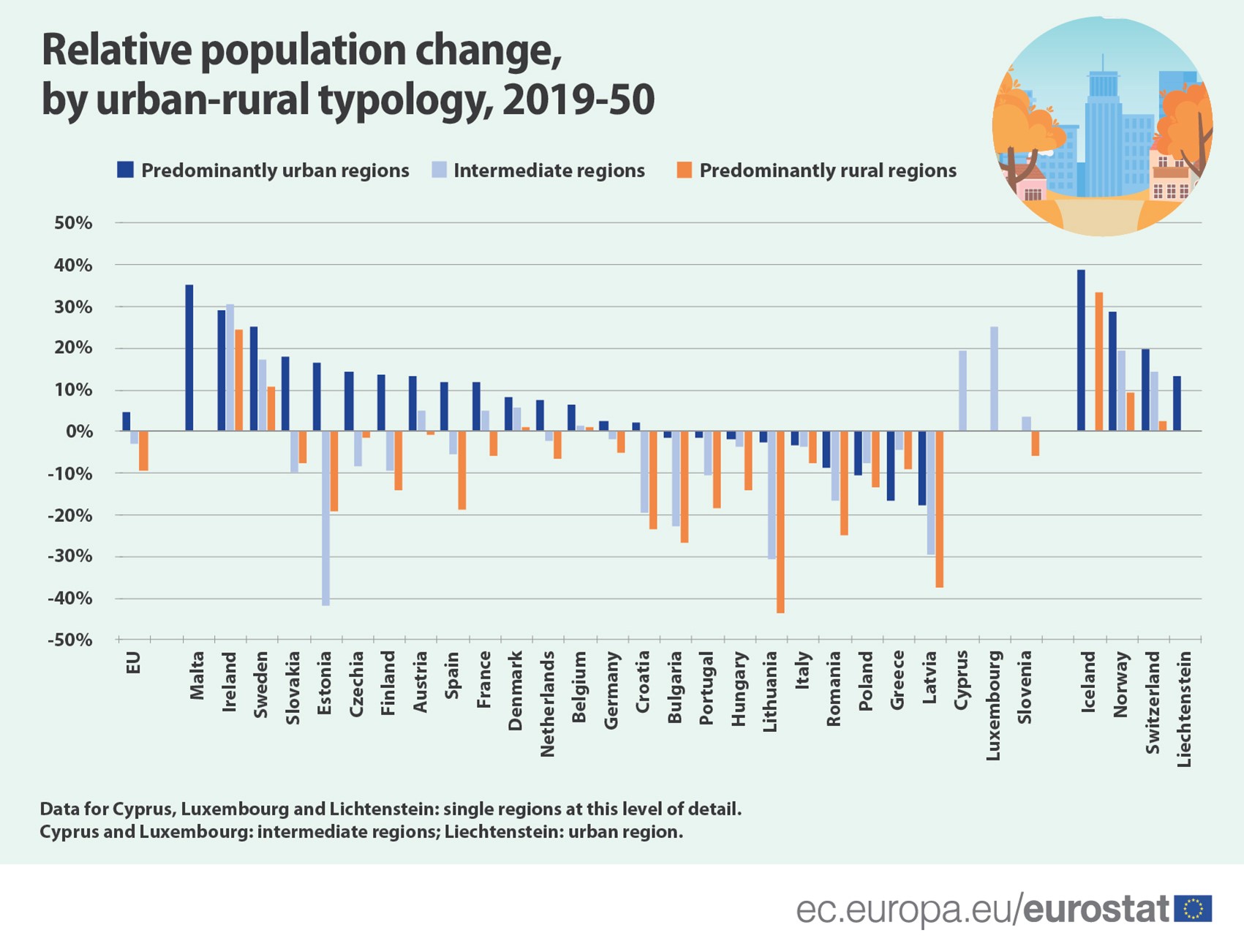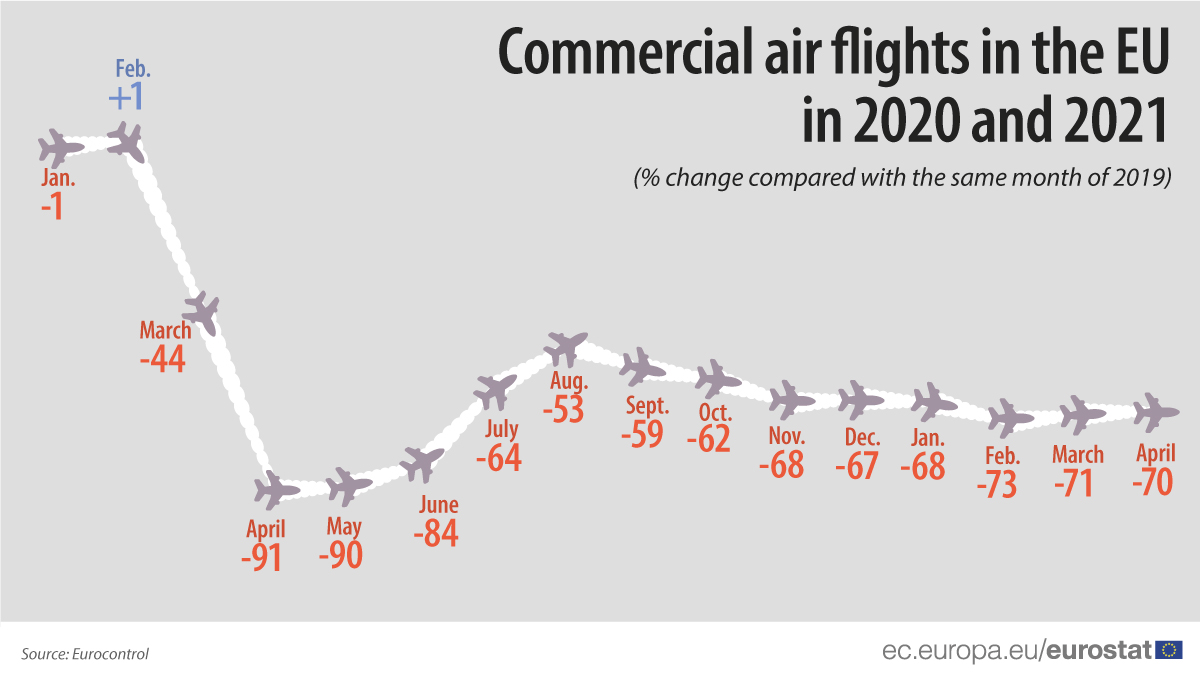In the first quarter of 2021, seasonally adjusted GDP decreased by 0.3% in the euro area and by 0.1% in the EU compared with the previous quarter.
Statistics
Volume of retail trade down by 3.1% in both euro area and in the EU
Up by 23.9% and 22.4% compared with April 2020
The annual mean concentration of fine particles (PM2.5) in urban areas of the EU has been gradually decreasing to 12.6 μg/m3 in 2019.
In 2020, there were 195.4 million households in the European Union (EU). Almost one-third of these households (29%) had children living with them.
Gross hourly earnings vary considerably across occupations. Based on detailed earnings data for 2018, managers were the best-paid occupation in all EU Member States.
One-fifth (20.3%) of employees born outside the EU were employed on a temporary contract in the EU in 2020, compared with 13.8% for temporary employees born in a different EU Member State and 11.8%
In 2019, 46% of the EU population lived in flats, while just over a third (35%) of the population lived in detached houses and almost one fifth (19%) lived in semi-detached or terraced houses.
Populations are projected to grow in almost three out of five urban regions of the European Union (EU), whereas they are likely to shrink in four out of five rural regions by 2050.
The social distancing measures that were introduced as a response to the COVID-19 pandemic forced many people to work from home.
To prevent the spread of the COVID-19 pandemic, countries around the world have taken a variety of restrictive measures since the beginning of 2020.
